EcoNós
Connecting People in Nature

OVERVIEW
EcoNós is a plataform for connecting ecotourists and hiring guides in self-service model. It runs from the Discovery phase to the Usability tests and hi-fi Prototyping.
role & duration
Product Designer
User Research, Interaction, Visual design, Prototyping & testing
March ⇾ June 2022 (three months)
1. Reading contexts
A niche and an opportunity
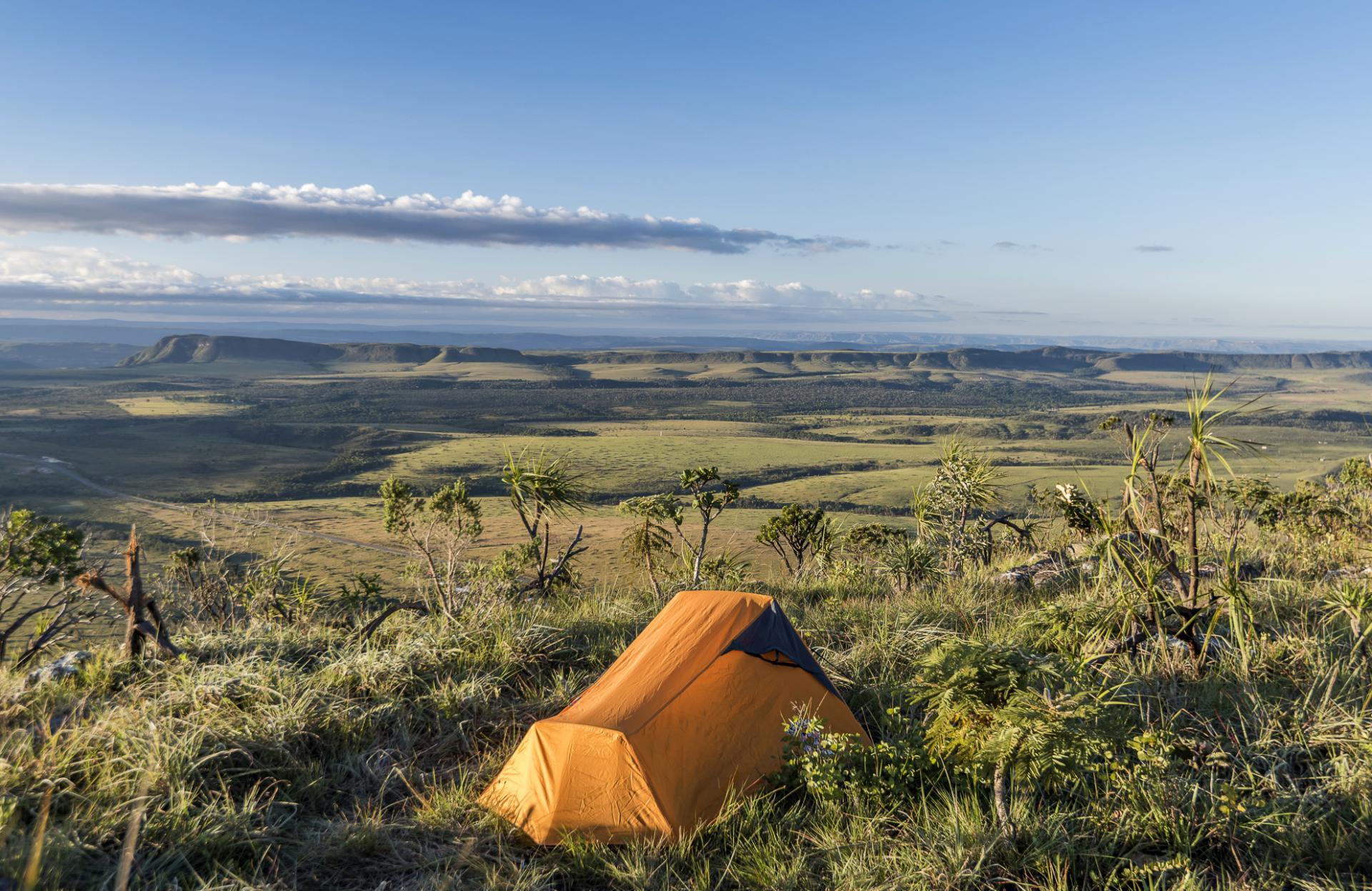
• My start pointing was a niche: ecotourists
• In a Desk Research I’ve found an opportunity: ecotourism market is rising in Brazil, mainly in what we call the “post-pandemic” moment
• I needed a Discovery phase to understand the ecotourist’s main pains
2. Discovering
Let’s reveal some pains!
• I needed both quantitative and qualitative approaches in order to discover and understand those pains
• In a Research Plan, I set the objectives, main methodologies and timing. I decided to use forms and interviews
Quantitative research: forms
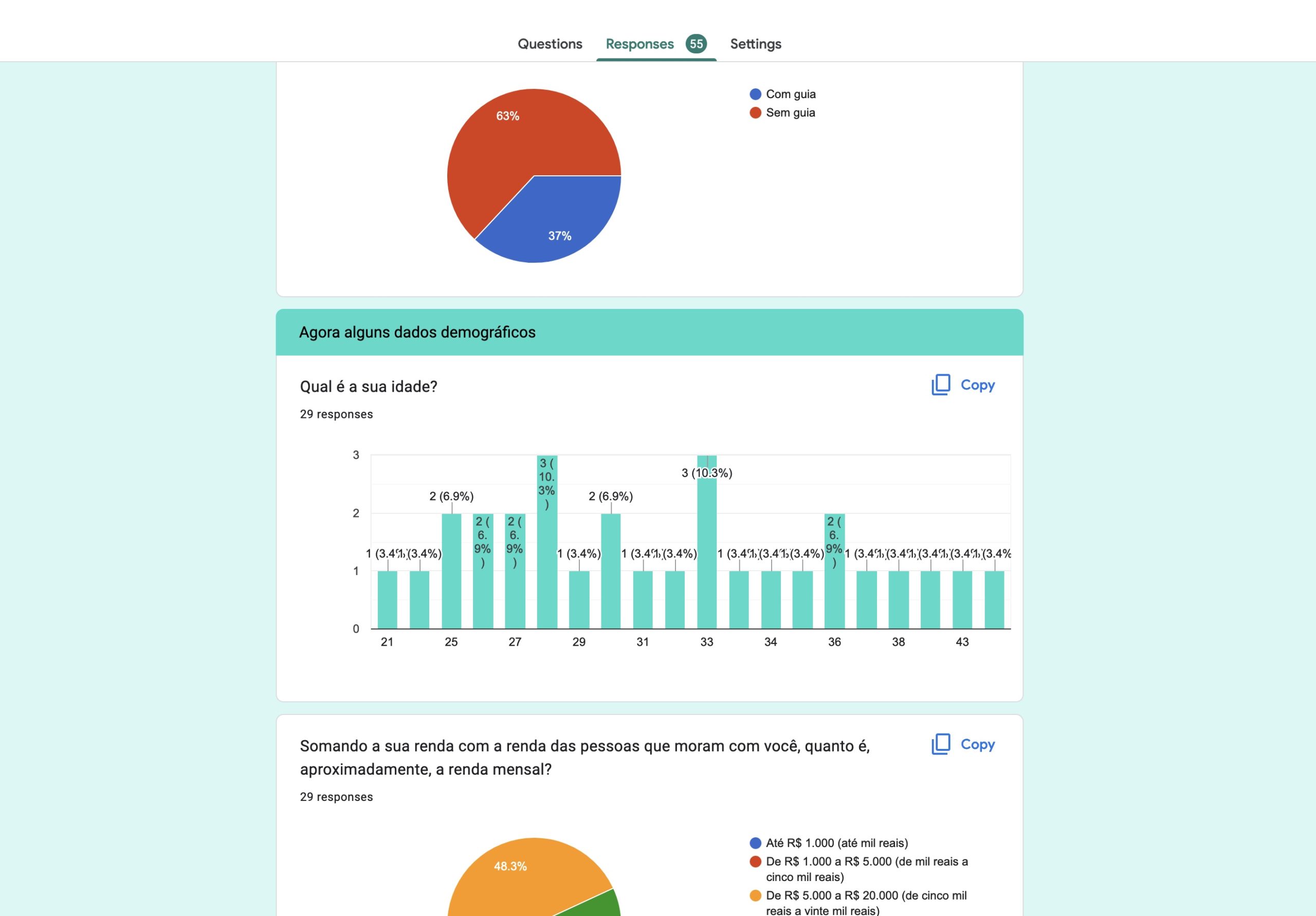
The form results helped me seeing the demographics and also the basic drives, habits and possible pains of the ecotourists. Some important insights:
• Average age of 29 years
• Even distribution of genders
• 82.7% engage in two or more ecotourism activities annually
• 51% considered their frequency of activities as insufficient
• 61% considered lack of company (31%) or logistic decisions (31%) as their main barrier
Qualitative research: interviews

I interviewed 6 people based on the amplitude of my quantitative approach results. An Interview Guide helped me setting neutral and open questions. The interviews were conducted over a period of 2 weeks.
results: a problem with socialization
After synthesizing the quantitative and qualitative approaches and crossing its results it became evident that the ecotourists’ main pains were related to the concept of socialization:

find and define companies (based on both affection and technical skills)
establishing interpersonal connection with guides
feeling safe and developing autonomy as a female adventurer

3. Synthesizing
Finding patterns and correlating information
I used synthesizing artifacts for decomposing, then consolidating information in order to generate more insight.
Empathy maps
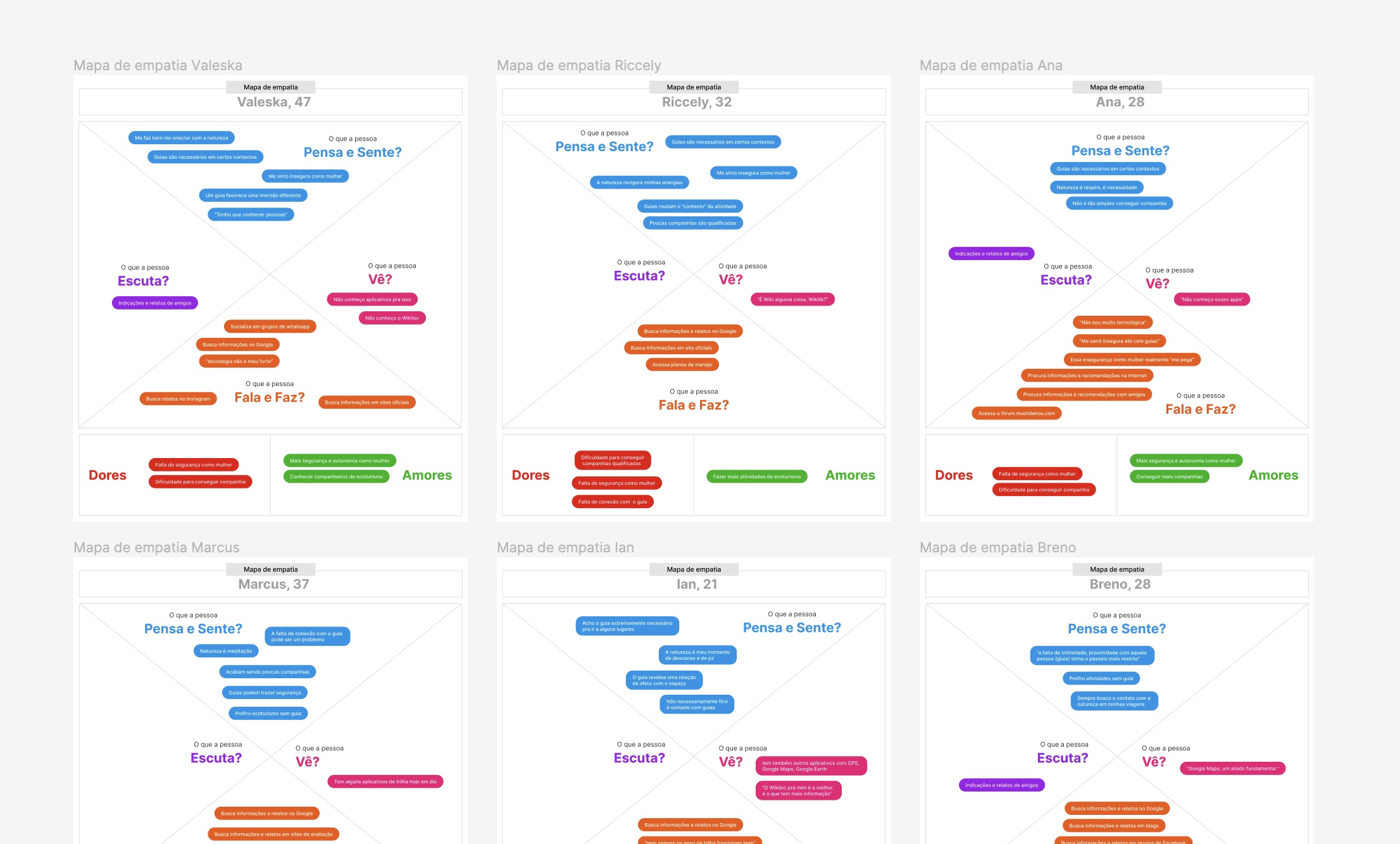
The empathy maps have helped me decomposing and finding patterns on the interviews transcriptions while facilitating my understanding of the potential user’s perspectives.
Personas
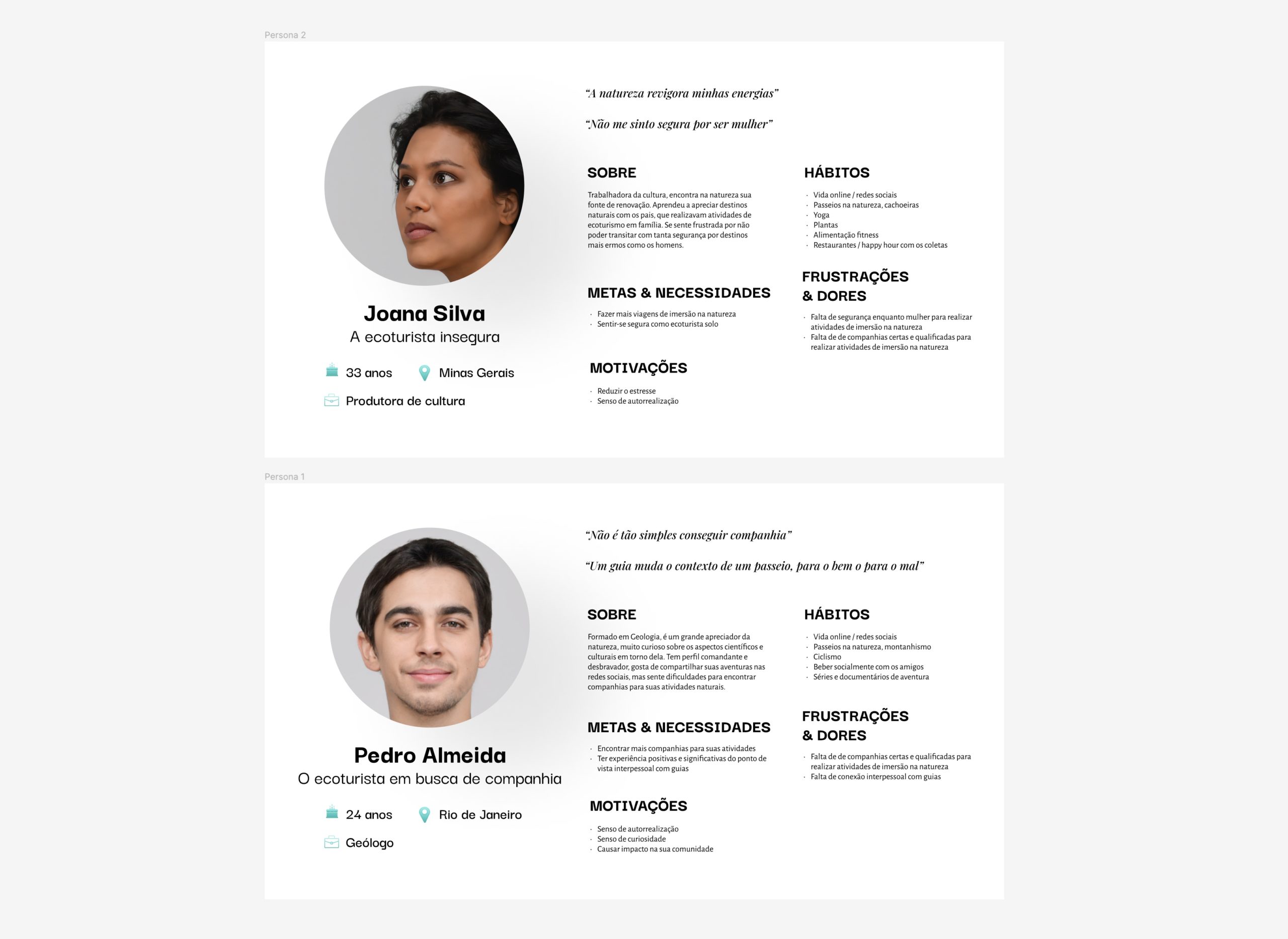
The personas methodology helped me formalizing the information, patterns and points of view previously captured.
persona 1: the female insecure adventurer (main traits)
• nature recharges me / I don’t feel safe
• 33 years, cultural producer
• wants to do more nature immersion trips for recharging and reconnecting with herself
• struggles with feeling safe as a woman traveling alone or hiring guides
persona 2: the ecotourist in search of company (main traits)
• It’s not that simple to find company / A guide can change a journey, for good or for bad
• 24 years, geologist
• wants to do more collective and technical nature activities for self-realization
• struggles with finding skilled company or establishing interpersonal connection to guides
User stories
After unfolding and synthesizing a lot of information, it was possible to come up with potential users’ propositions:

As an ecotourist, I would like to connect more easily with other ecotourists in order to find more qualified companies for my activities
As a female adventurer, I would like to access more strategic information about people, guides and places prior to the activities in order to feel more safe and develop autonomy
As an ecotourist, I would like to access personal and contextual information about the guides in order to improve the chances of a meaningful personal connection
4. Ideating
imagining solutions to certain people and needs
Benchmarking
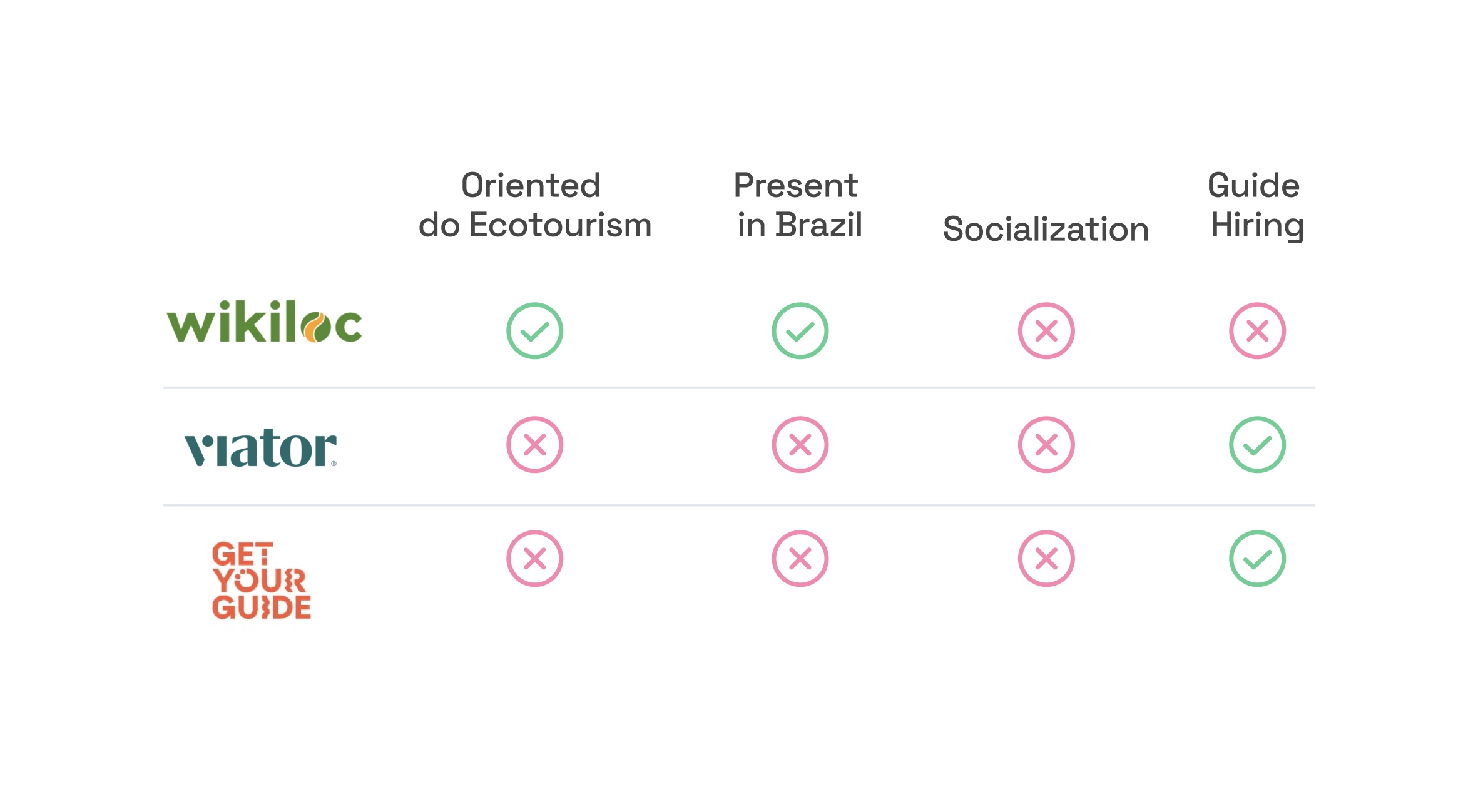
In a simplified version of a competitive benchamarking it was possible to see an opportunity: no platform was really approaching the identified pains and barriers within the same focus – ecotourism. I crossed the following conditions:
• Orientation to Ecotourism
• Presence in Brazil
• Features or ecossistem oriented to socialization
• guide hiring possibility
the platform
In order to really approach the socialization barriers I identified among ecotourists, I decided to center the development process around two main propositions:
1.
Access and exchange of strategic information as a way of propitiating connection between ecotourists and contexts of safety for realizing activities (mainly thinking of women)
2.
Posibility of hiring guides directly through the platform using a self-service model
Finally, I could define the product value propostion:
EcoNós: a safe social platform for connecting ecotourists and hiring guides in self-service model
5. Giving it form
from user flows to prototyping
• Based on the ecotourists habits identified in the quantitative research, I decided to go with a mobile app format
• This entire phase was pretty much iterative. I went back and forth several times, rebuilding the product based on new insights, limitations and good practices.
user flow + site map
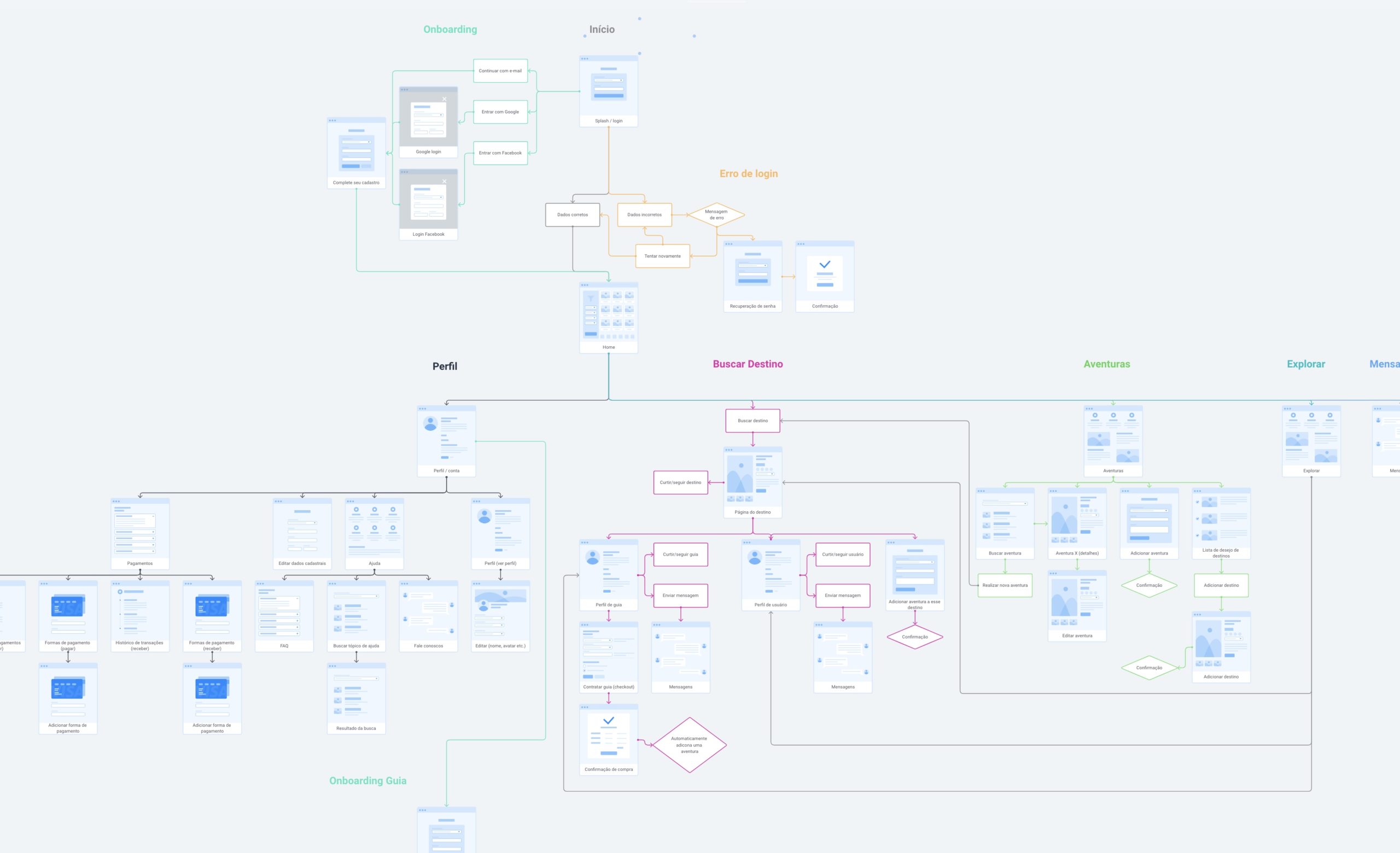
In this phase I could define the main sessions of my product:
1. Profiles/network: a way of connecting users and guides
2. Attractions: a session for displaying specific information about places
3. Trips: a session for displaying information about trips
4. Chat/messages
And the main functions and features:
• Searching people and attractions
• Connecting to regular users and guides
• Booking trips with or without guides
• Hiring guides for your trips
wireframing
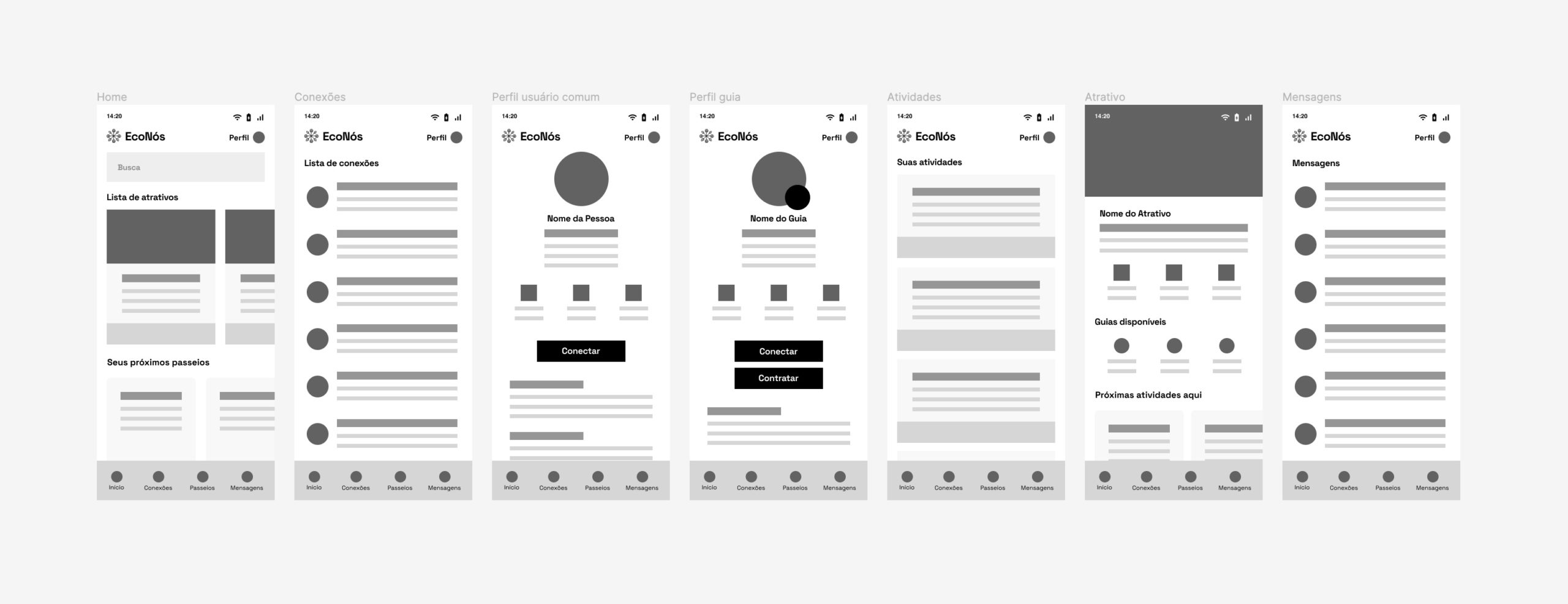
prototyping
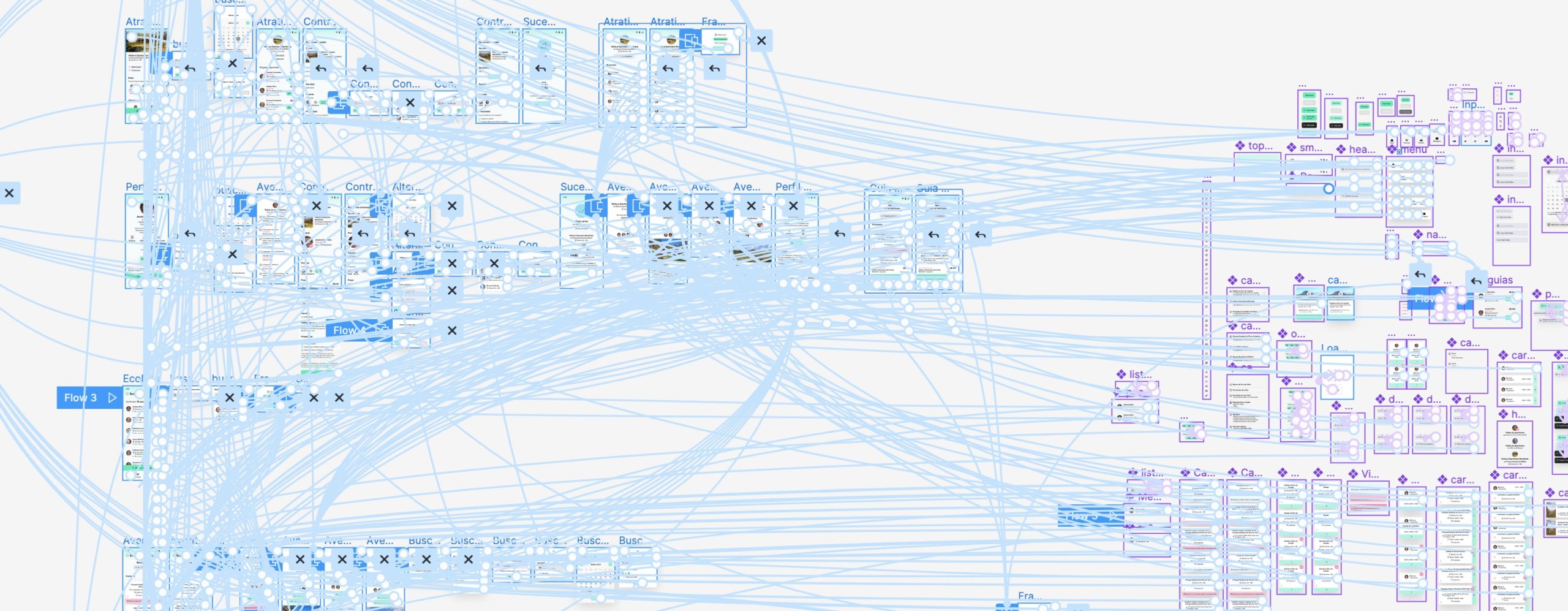
6. The Solution
product features in detail
profiles for connecting people
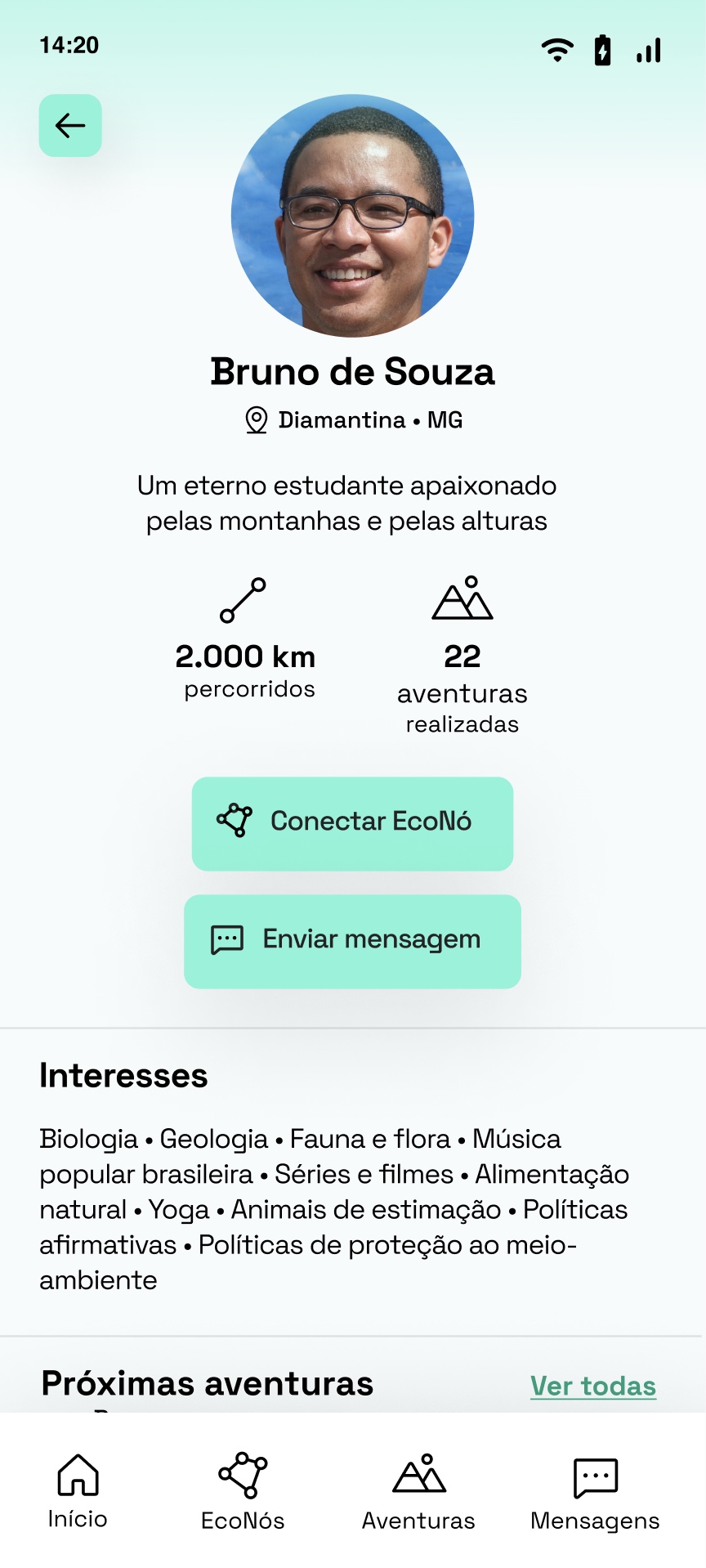
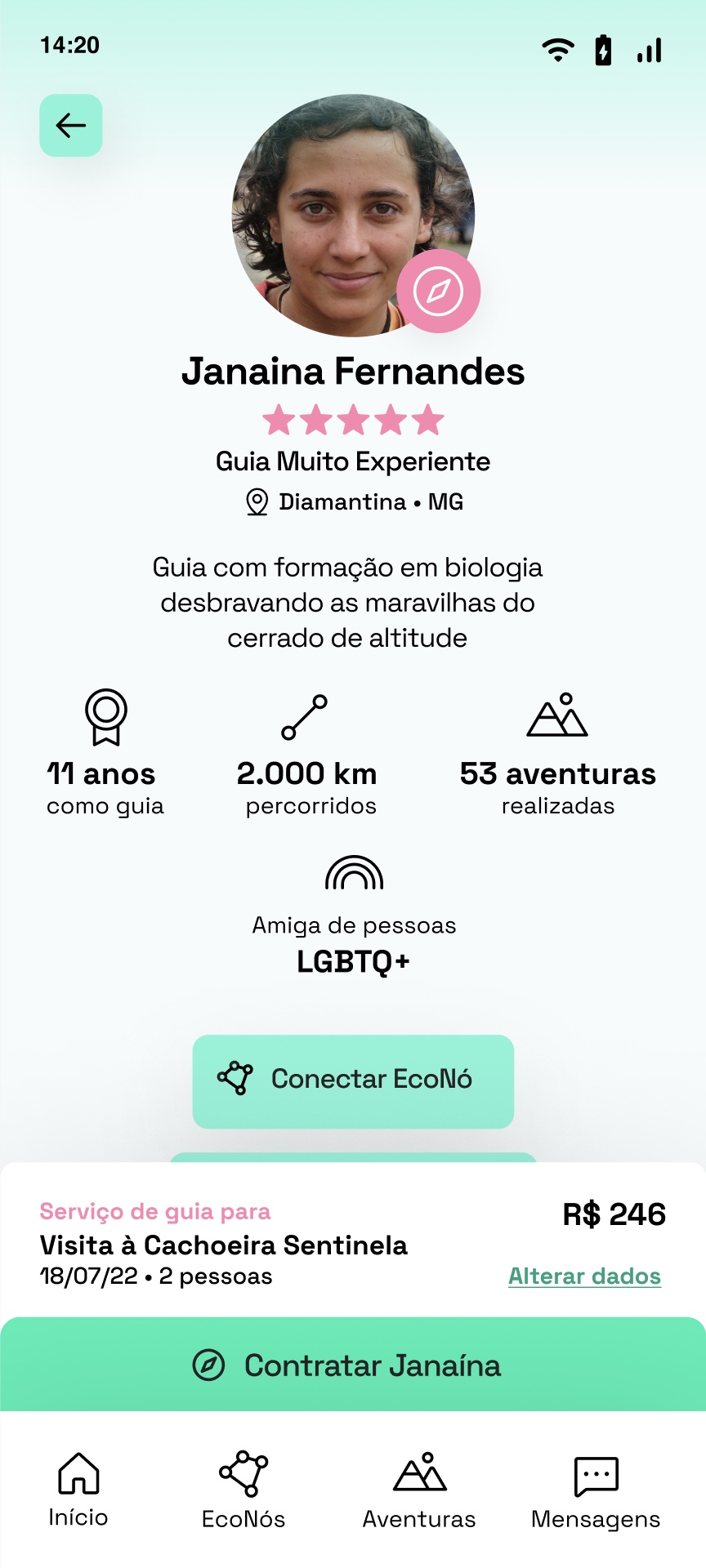
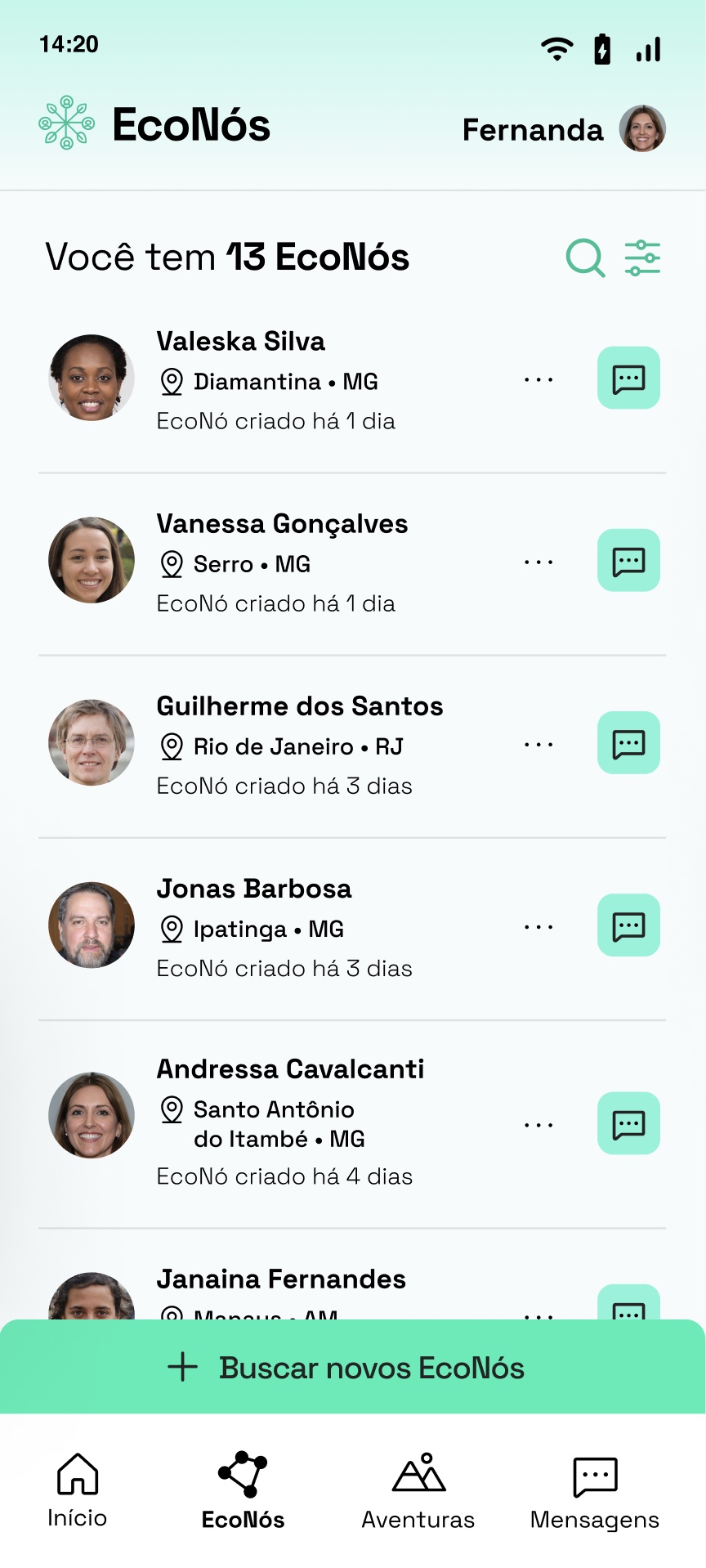
The profiles of regular users and guides display strategic information for facilitating the connection and the sense of security:
• display of subjective and more personal inclinations
• display of technical skills
• display of future and past trips
• possibility of direct connection between users
attractions and trips
• display of available guides for a certain attraction
• display of future and past trips there (with testimonials)
• display of technical specifications such as distance, difficulty level, opening hours and so on
• possibility of booking trips (and inviting friends) there with or without guide
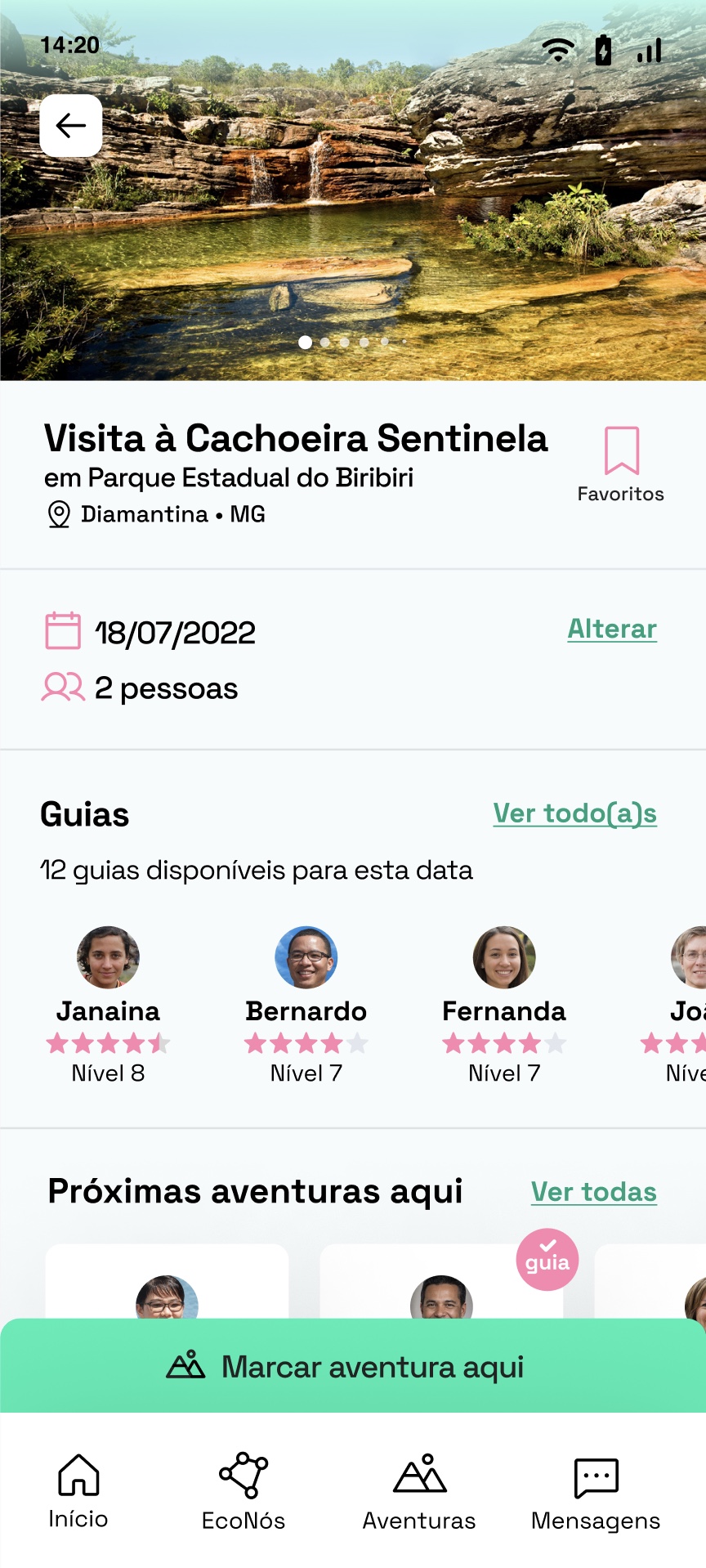
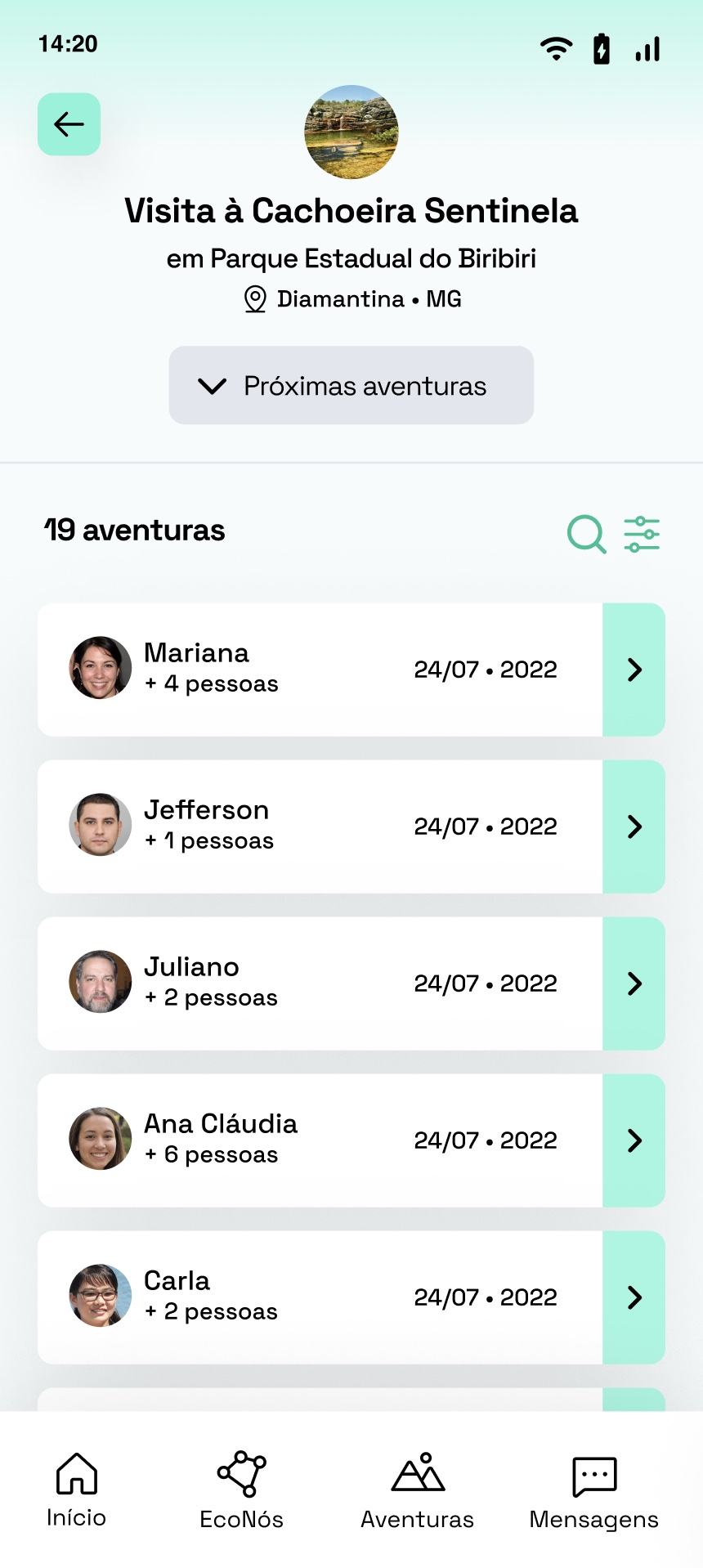
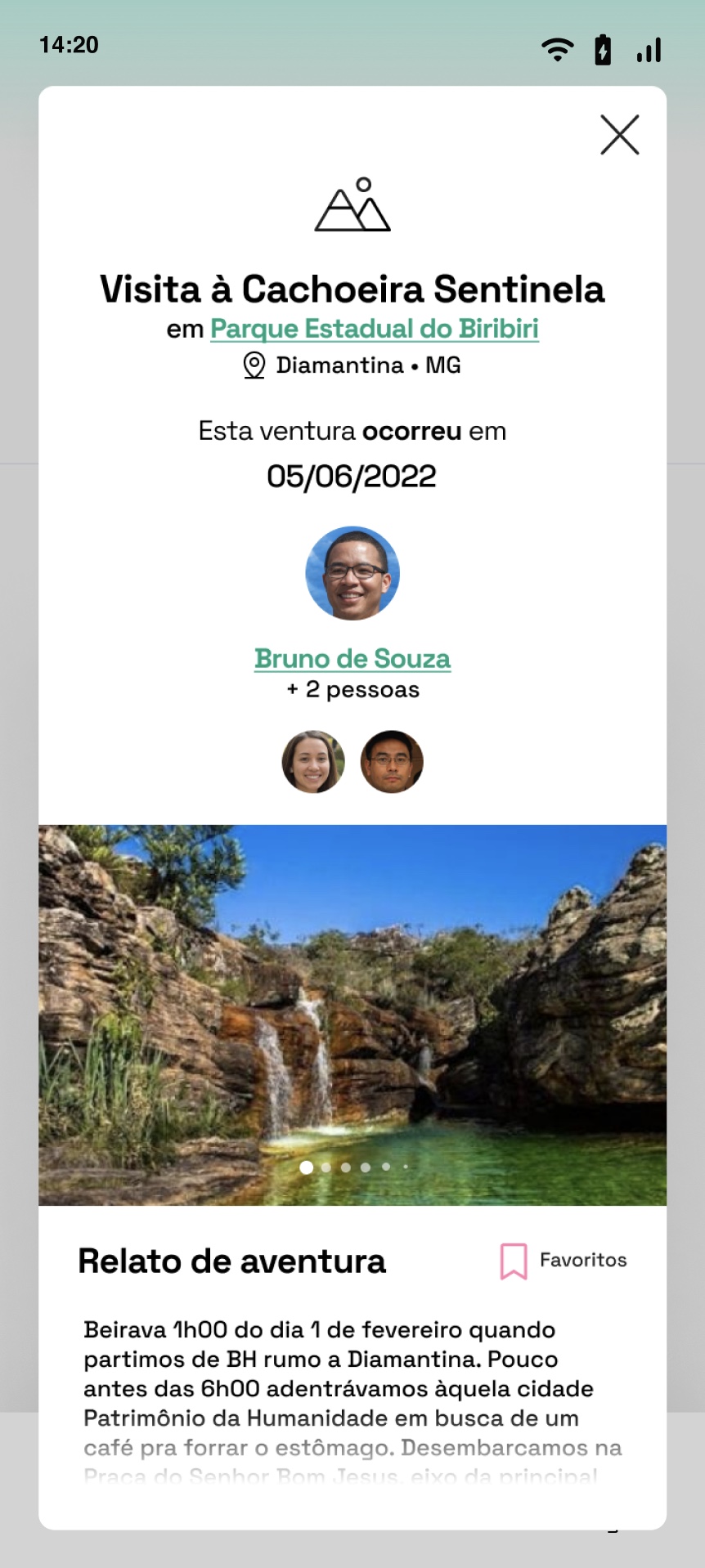
hiring a guide
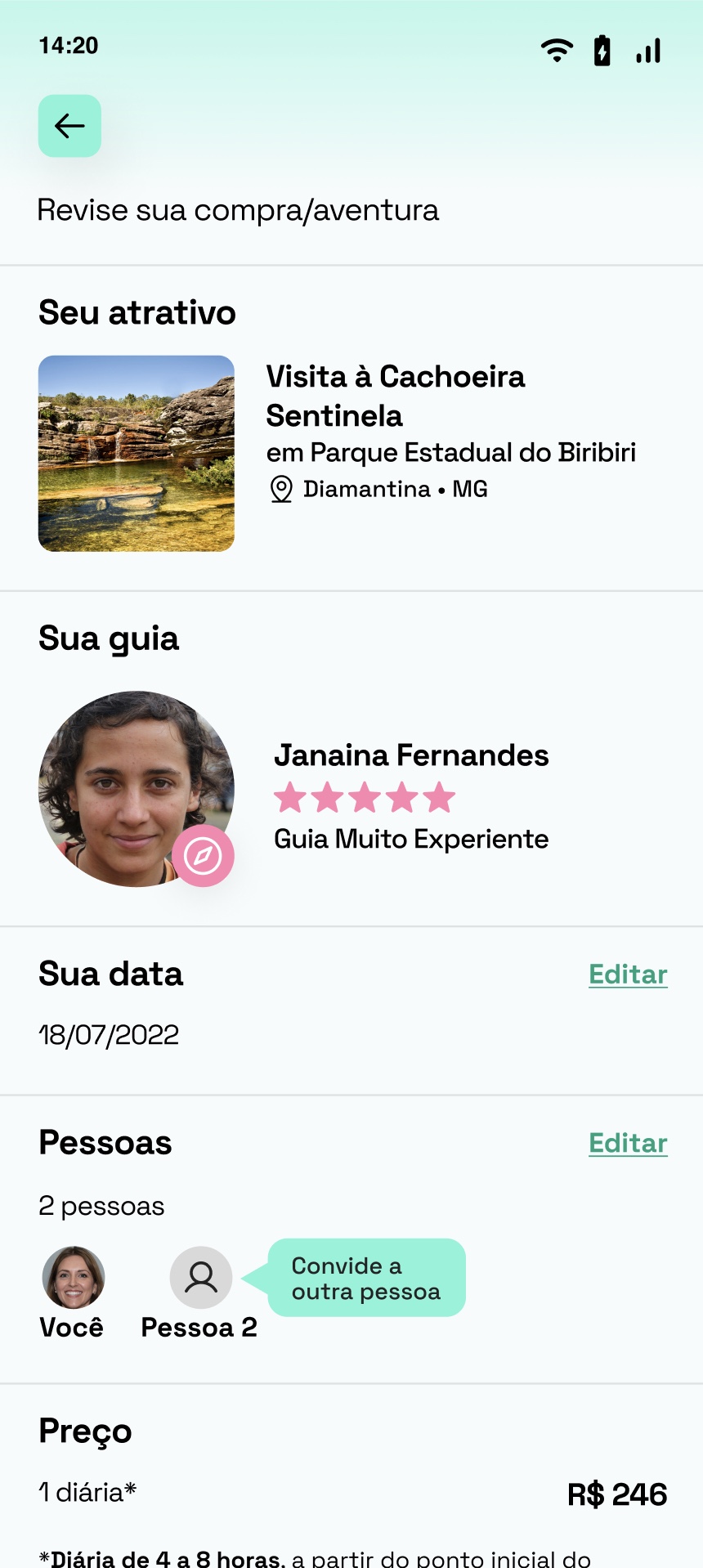
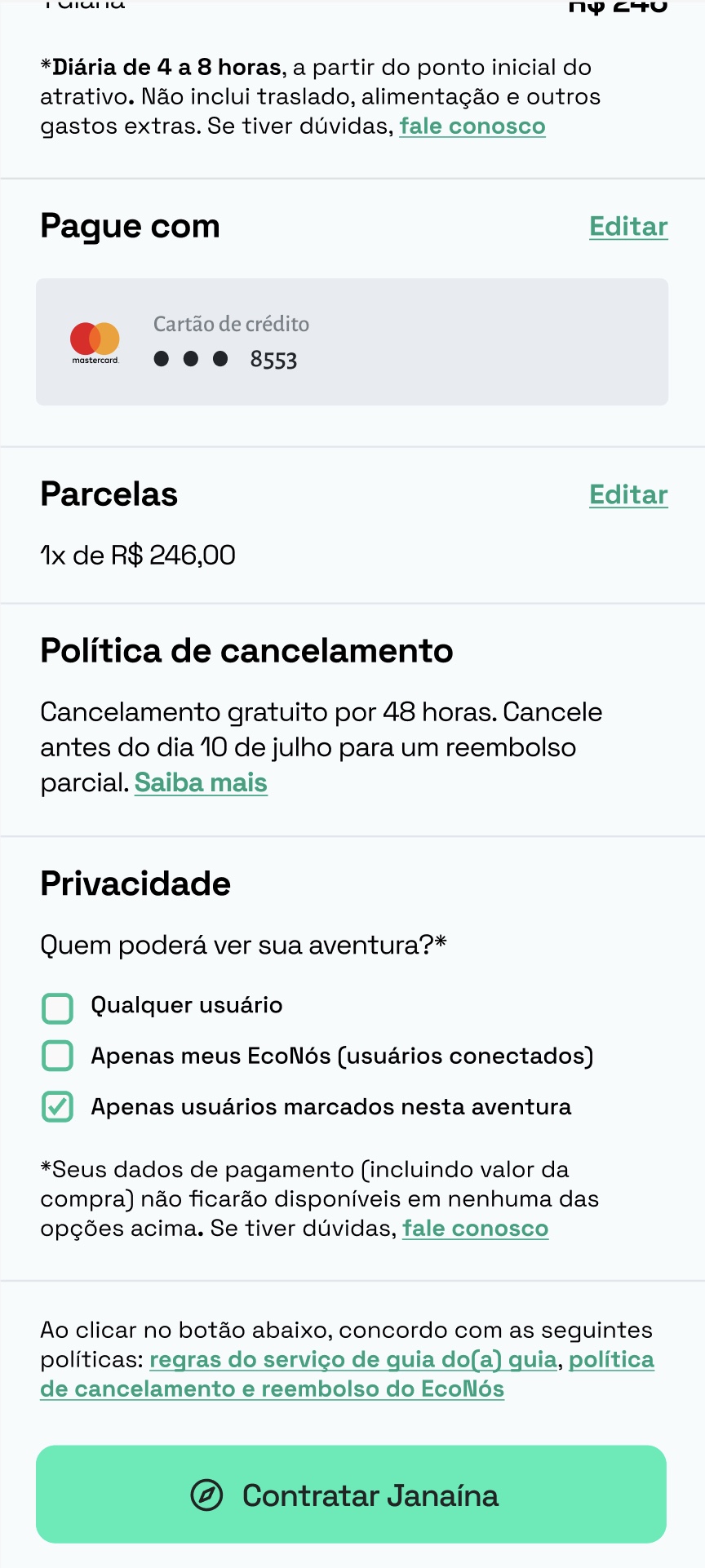
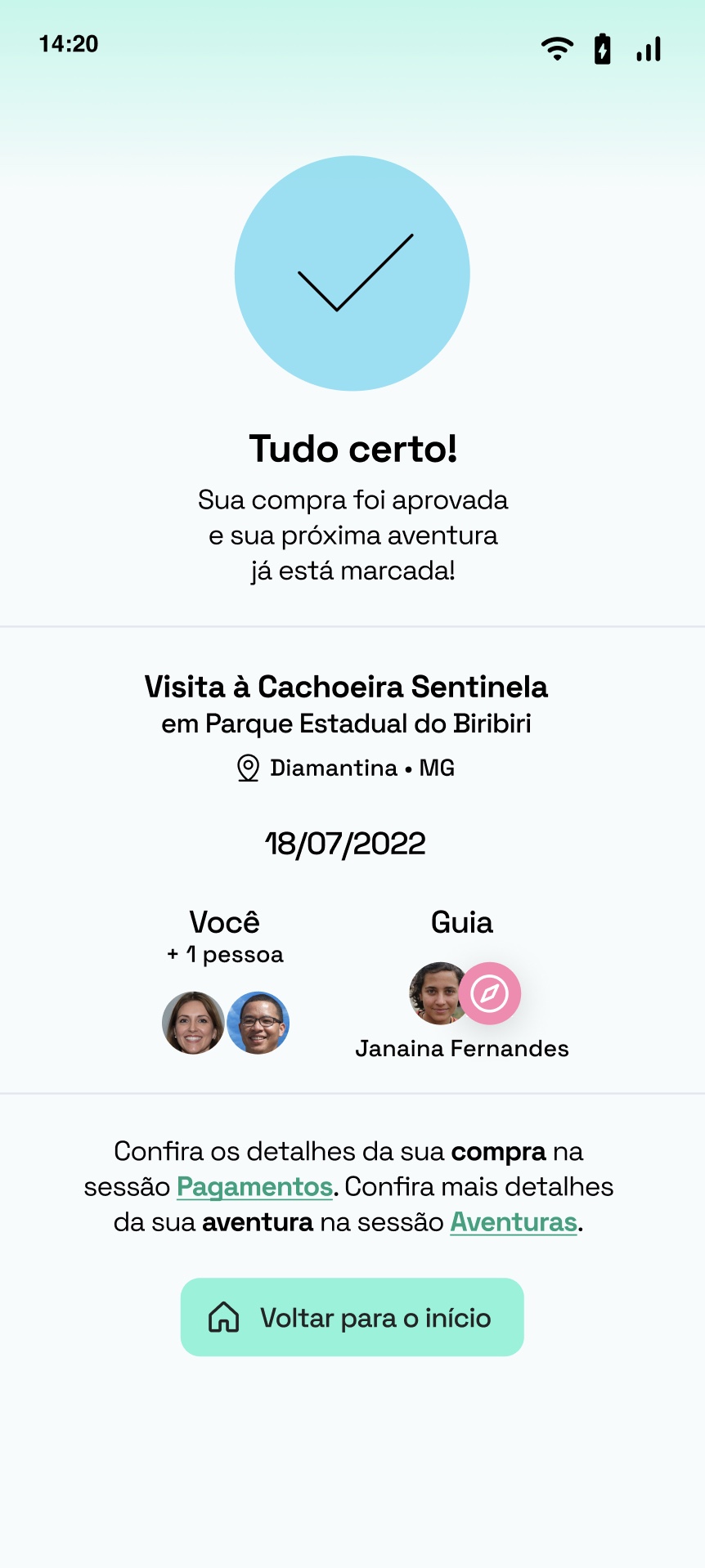
self-service model
searching people and attractions
• search regular users or guides
• search cities and regions
• search attractions + dates
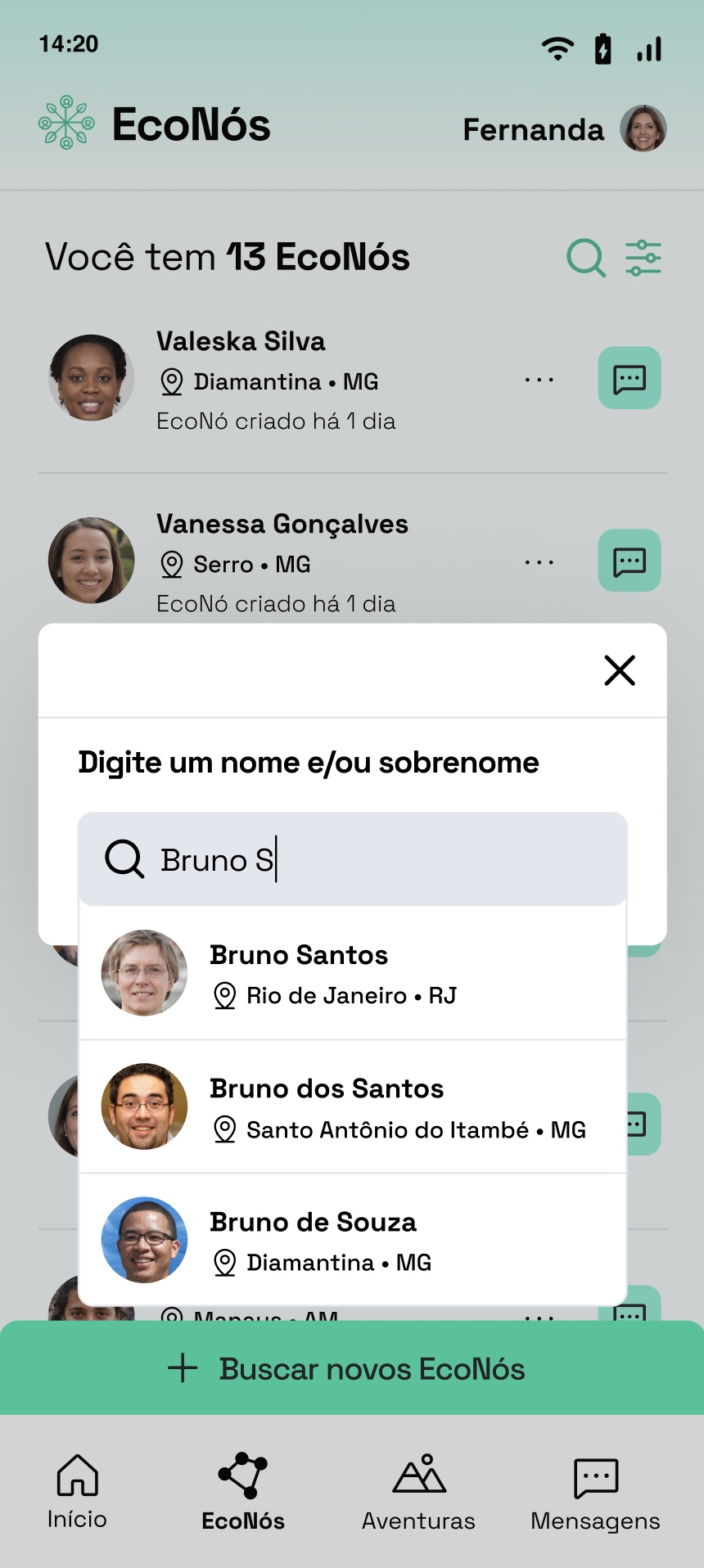
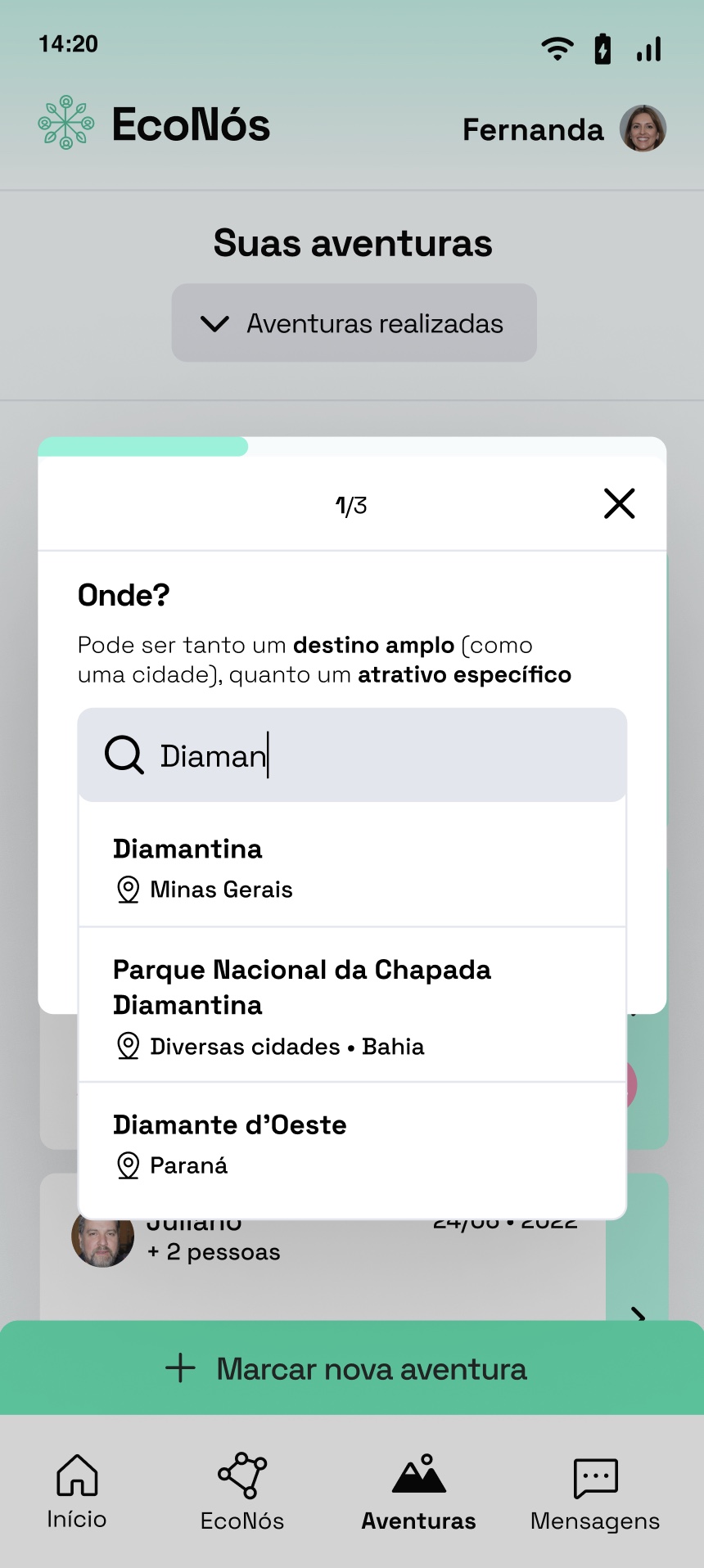
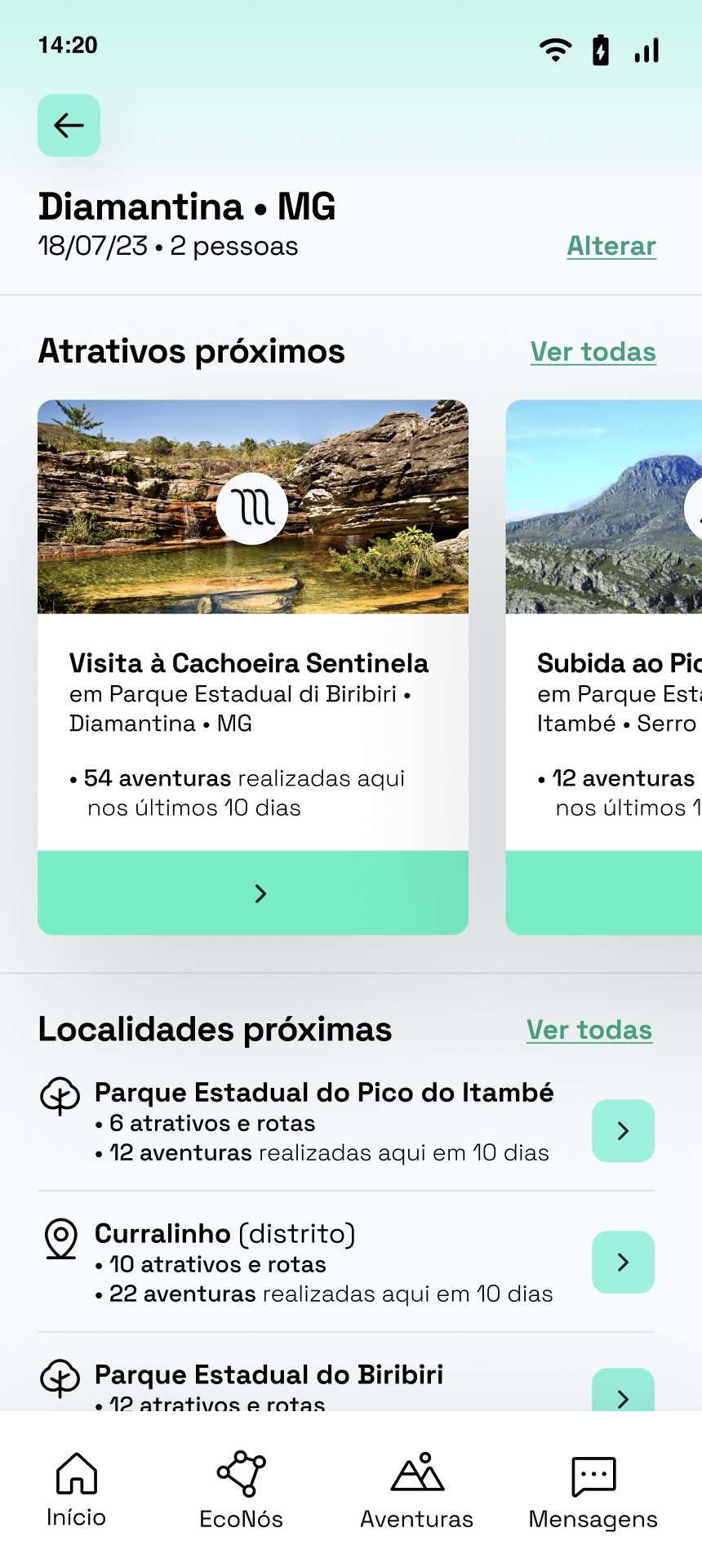
7. Testing
usability tests and its results
I performed two different kinds of tests, both moderated and followed by a simple interview
4×
General tasks tests
such as connect with someone new or hire a guide for a trip
4×
More specific tasks tests
such as change your credit card information or submit your testimonial to an attraction trip
a safety problem (4× brought by users)
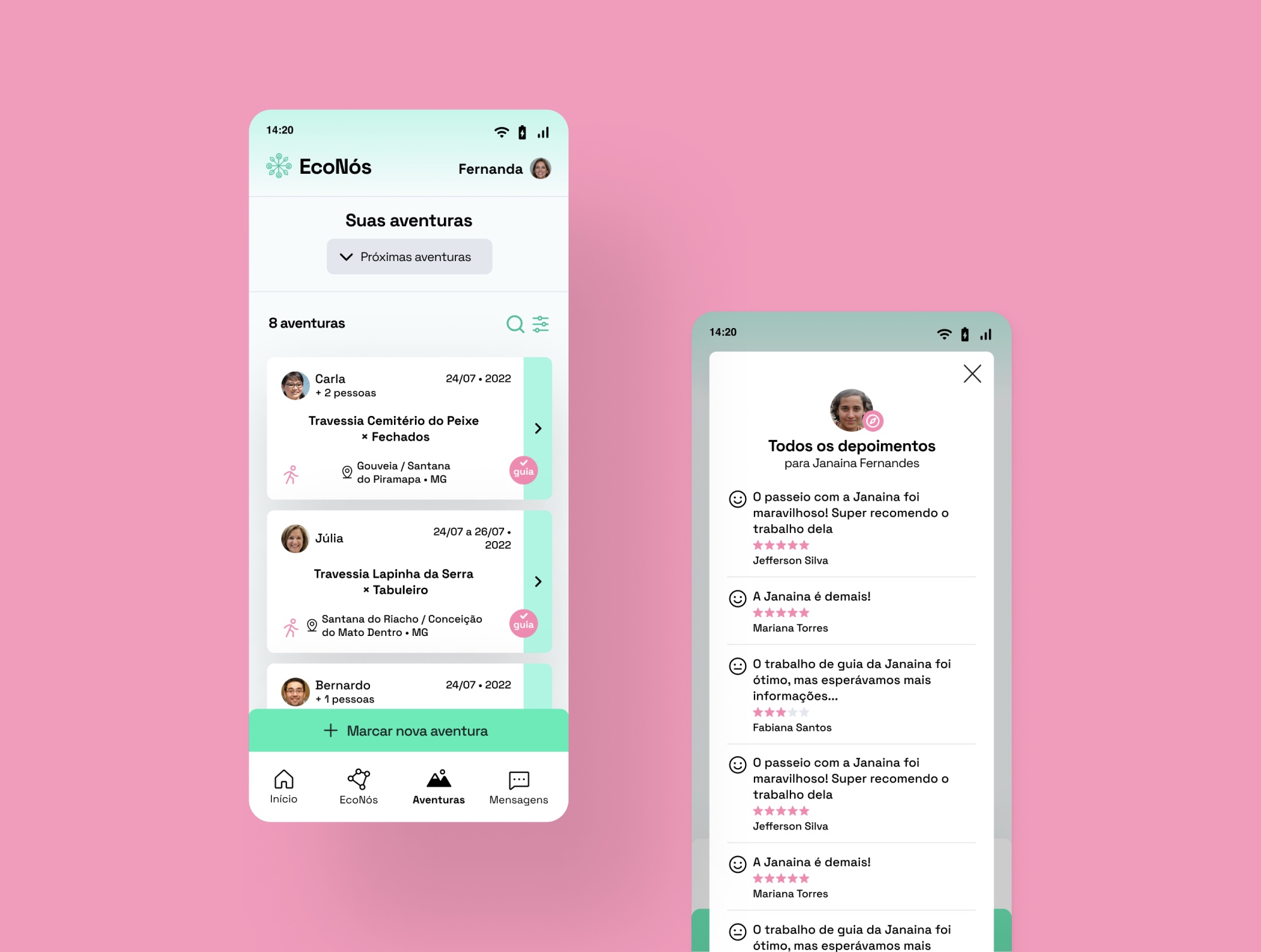
The privacy settings were not explicit enough, so the users couldn’t find the options to make content private or public. People, mainly women, didn’t feel safe imagining their information would be accessible by any user.
a ux wiriting problem (6× brought by users)
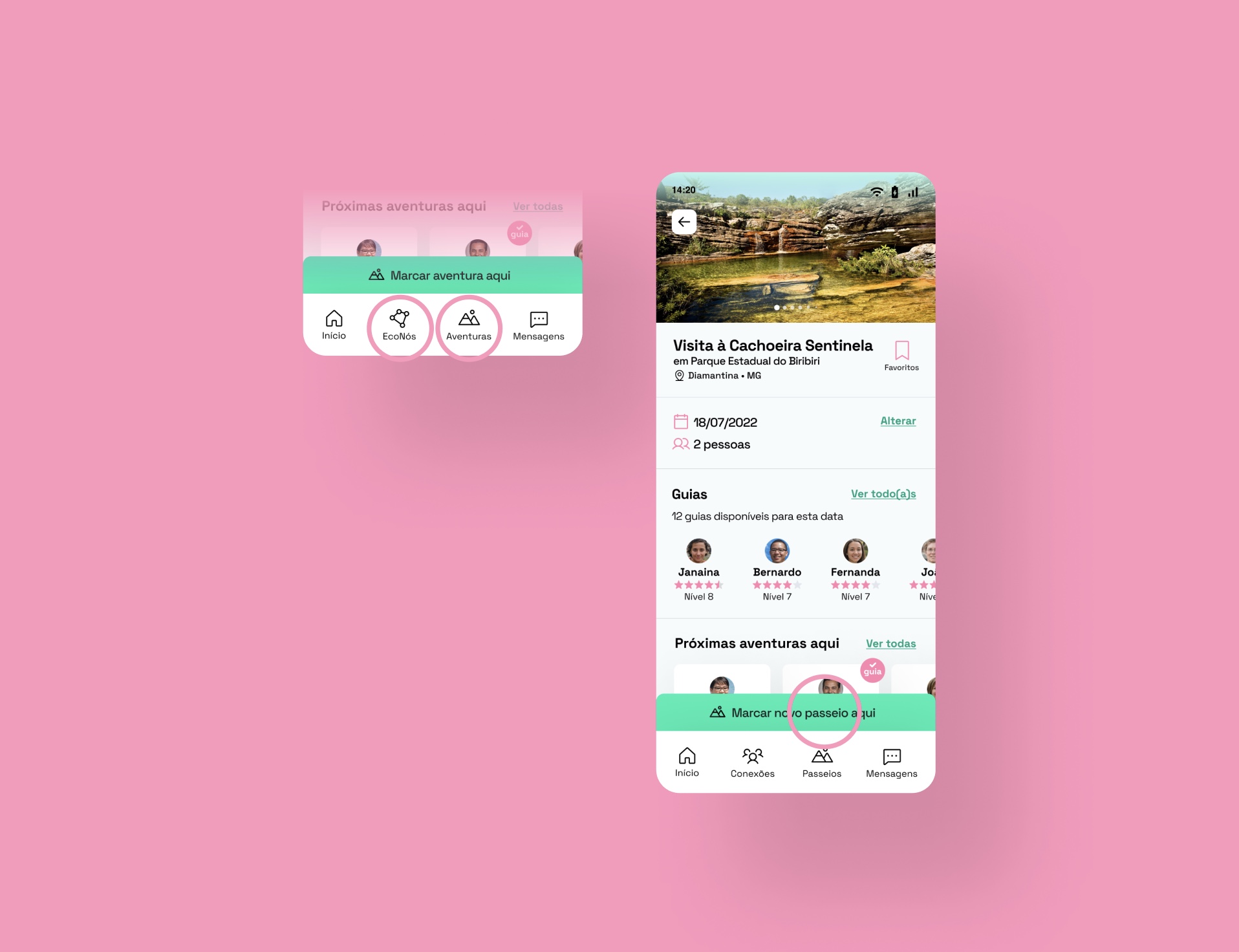
The users were having a hard time understanding the main session names, it was somehow off their daily experiences with ecotourism.
comfort and familiarity
Despite the problems already identified, people reported comfort and familiarity while interacting with the protoype.
8. Improving
last touches
more control over privacy
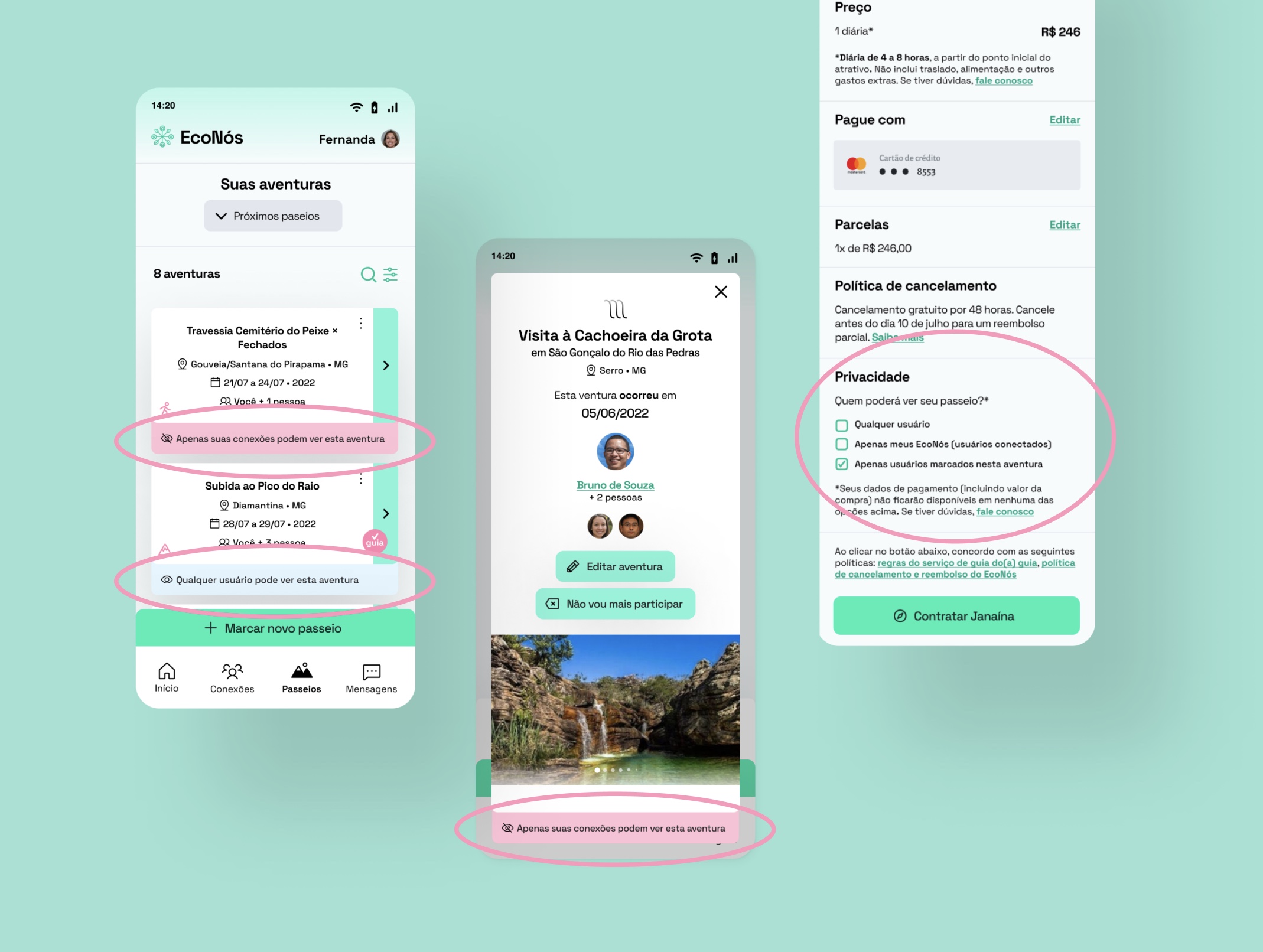
Now the controls over what is private or public are much more explicit to the users, giving the safety they need.
more common terms
With a little research was possible to identify the proper and simpler terms used by ecotourists and guides in their daily life. I re-named the main sessions.

9. Thoughts & Learnings
What this project has taught me
1. More iterations, less scripts
Interpreting contexts and navigating the whole process with more intuitivity – instead of simply mimicking predetermined scrips – leads to a more iterative and innovative development
2. More doubts, less certainties
Constantly trying to cross and validate information is a way of identifying errors before they can become structural fails
